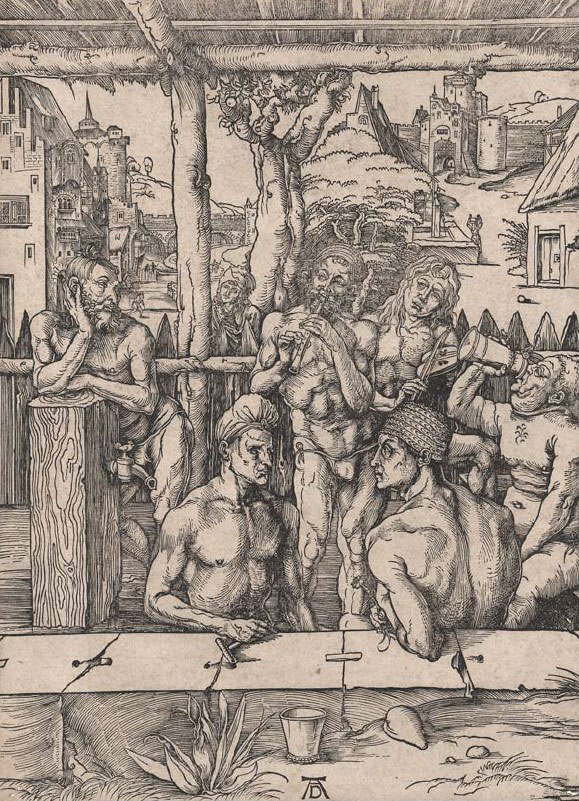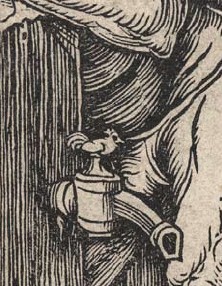- Relief printing
- Intaglio and planographic printing
- Color printing
- Bits and pieces
- Early photography in silver
- Non-silver processes
- Modern photography
- Color notes
- Color photography
- Photography in ink: relief and intaglio printing
- Photography in ink: planographic printing
- Digital processes
- Where do we go from here?
Woodcut Printing
 Woodcut. Albrecht Dürer. The Men’s Bath. c. 1496. 15 7/16 x 11 3/16" (39.2 x 28.4 cm). Collection of John Benson. Printers have had to devise methods of creating tonal variation using only black ink. One solution is to use finely spaced lines that, though black, give the eye the illusion of tone when viewed from a distance.
Woodcut. Albrecht Dürer. The Men’s Bath. c. 1496. 15 7/16 x 11 3/16" (39.2 x 28.4 cm). Collection of John Benson. Printers have had to devise methods of creating tonal variation using only black ink. One solution is to use finely spaced lines that, though black, give the eye the illusion of tone when viewed from a distance.
The intention is to explore this many-layered subject through an examination of the different ways in which printed pictures are made. An underlying premise is the fact that printing, photography, and digital technology, as applied to pictures, are all aspects of a single ancient process: that of creating fixed visual forms in multiple copies. I believe that pictures are as important as language, and that together they form the glue that holds society together.
As far as possible the texts follow a chronological thread, but because the various processes have originated and disappeared at different times, and because the texts and pictures are grouped by process, there is necessarily some jumping back and forth in time.
 Enlargement of Woodcut. Albrecht Dürer. The Men’s Bath. c. 1496. 15 7/16 x 11 3/16" (39.2 x 28.4 cm). Collection of John Benson. A detail enlarged about 1.2 times from the original print.
Enlargement of Woodcut. Albrecht Dürer. The Men’s Bath. c. 1496. 15 7/16 x 11 3/16" (39.2 x 28.4 cm). Collection of John Benson. A detail enlarged about 1.2 times from the original print.

